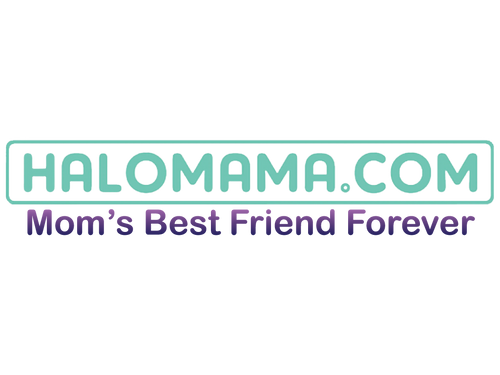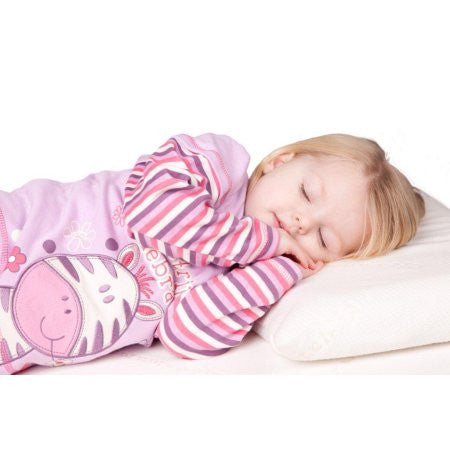
How to Protect Your Child from Insect Bites?
Mosquitoes, ticks and biting flies can carry disease. However the flies do not carry disease and disease from other insects is very rare. To help avoid insect and tick bites you can:
- Avoid sandals, wear light-coloured, long pants and long-sleeved shirts when outdoors, and tuck shirts into pants and pants into socks. This is especially important when mosquitoes are most active at dawn and dusk.
- Avoid places where mosquitoes breed and live, like standing water.
- Clean up any standing water in your yard.
- Keep screens in good repair.
- Cover playpens or strollers with a fine mesh netting when you are in an area with mosquitoes.
- Use insect repellents.
How can I use insect repellents safely?
- Read the entire label before using any insect repellent.
- Do not allow children under 10 years of age to put on their own insect repellent. Apply the product lightly and don’t use more than you need.
- Always spray in an open, ventilated area. Do not apply in a tent or motorhome.
- Do not apply on irritated or sunburned skin or on open cuts or scrapes.
- Do not apply on your child’s hands because she might rub it into her eyes or mouth.
- Be careful not to get it in your child’s eyes. If you do get the insect repellent in the eyes, rinse with water right away.
- Apply it only on top of clothing or to skin that is showing. Don’t use it under clothes.
- Reapply after swimming.
- When you don’t need the protection anymore, wash the repellant off with soap and water.
If you think your child is having a reaction to the product, wash the skin and get medical help right away. Take the container with you so the doctor knows what you used.
Can I use insect repellent and a sunscreen at the same time?
Yes, but avoid products with a combination of insect repellent and sunscreen. Sunscreen typically needs to be reapplied more often than repellent. If repellent and sunscreen are both required, the sunscreen should be applied first. Wait 20 minutes and then apply the insect repellent.
1)NATURAL MOSQUITO REPELLENT BRACELET (CHILD)
 ●Features
●Features
1.The Simba mosquito repellent bracelet is made of natural lemon essential oil, cintronella extract and nanotech mosquito repellent ingredients.
2.Mild natural formula, tested DEET-Free by SGS.
3.Forms a 1 meter surrounding protection area and service hour is continuous 168 hours.
4.Smooth button design, the length could be adjusted to proper size! Way to use:
5.Hang on baby bed, stroller or any place near the kid to form the protection area.
6.Wear the bracelet on wrist or ankle while outing, traveling, sport, and camping.
●Material
Natural lemon essential oil, cintronella extract, nanotech mosquito repellent ingredients, and artificial
leather.
●Size:22X2.3cm
2)NATURAL ORANGE MOSQUITO REPELLENT BRACELET -CHILDREN

●Features:
1. SGS tested for safety, 0% DEET
2. Nontoxic artificial leather, soft and firm, comfortable all day long
3. Press buttons, easily adjust the length
4. Sealing foil bag with ease of use
5. Lovely design to sparkle children’s imaginativeness
6. 168 long serving hour
●Ingredients:
citronella essential oil, organic orange essential oil, botanic repellent ingredients, eco-friendly soy ink
●Material:
High density, nontoxic artificial leather
●Size: 22X1.8cm (Ideal for children under 12 years, or wrist 15~20 cm)
※Please put it on the ankle for children under 6 years
3)NATURAL MOSQUITO REPELLENT STICKER (8PCS)

●Features
1.Premium organic lemon essential oil form England, no chemicals used.
2.Eco-friendly soy ink used, love your baby and love the earth.
3.High density, nontoxic, and non-woven fabric used, bigger size with better performance.
4.Natural and gentle formula, SGS tested no DEET, no side effects.
5.Creats approximately 50 cm diameter indoor or 30 cm diameter outdoor protection area, long serving hour.
6.Post-it design, suitable for mutiple surfaces.
7.Sealing foil bag included, convenient for outdoor activities.
8.Adorable Simba snap shot graphics.
●Ingredients : citronella essential oil, organic lemon essential oil, botanic repellent ingredients, eco-friendly soy ink
●Material : High density, nontoxic, and non-woven fabric, 3M back glue
●Size : 3.2X3.2cmX8pcs
4)NATURAL MOSQUITO REPELLENT STICKER (16PCS)

●Features
1.Premium organic lemon essential oil form England, no chemicals used.
2.Eco-friendly soy ink used, love your baby and love the earth.
3.High density, nontoxic, and non-woven fabric used, bigger size with better performance.
4.Natural and gentle formula, SGS tested no DEET, no side effects.
5.Creats approximately 50 cm diameter indoor or 30 cm diameter outdoor protection area, long serving hour.
6.Post-it design, suitable for mutiple surfaces.
7.Sealing foil bag included, convenient for outdoor activities.
8.Adorable Simba snap shot graphics.
●Ingredients : citronella essential oil, organic lemon essential oil, botanic repellent ingredients, eco-friendly soy ink
●Material : High density, nontoxic, and non-woven fabric, 3M back glue
●Size : 3.2X3.2cmX16pcs
5)NATURAL ORANGE MOSQUITO REPELLENT STICKER (12PCS)

●Features:
1. SGS tested for safety, 0% DEET
2. Eco-friendly soy ink used
3. 3 M back glue, leave no residues
4. 72 long serving hour
5. Sealing foil bag with ease of use, convenient and easy to store
6. Post-it glue design, can be used on multiple surfaces
●Ingredients:
citronella essential oil, organic orange essential oil, botanic repellent ingredients, eco-friendly soy ink
●Material:
High density, nontoxic, and non-woven fabric, 3 M back glue
●Size: 3X3cm / pc (12 pcs)
6)NATURAL ORANGE MOSQUITO REPELLENT STICKER (24PCS)

●Features
1. SGS tested for safety, 0% DEET
2. Eco-friendly soy ink used
3. 3 M back glue, leave no residues
4. 72 long serving hour
5. Sealing foil bag with ease of use, convenient and easy to store
6. Post-it glue design, can be used on multiple surfaces
●Ingredients
citronella essential oil, organic orange essential oil, botanic repellent ingredients, eco-friendly soy ink
●Material:
High density, nontoxic, and non-woven fabric, 3 M back glue
●Size: 3X3cm / pc (24 pcs)
7)SONIC MOSQUITO REPELLENT

●Features
1.Multi-frequency electronic mosquito repellent,with LED light, makes your life easier.
2.3 volume settings, service area is within one meter radius.
3.Unlike chemical products, sound frequency theory is human friendly and no side effects.
4.Non-toxic ink applied, safe to use.
5.Hanging string and keychainincluded,portable and convenient.
●Material:
Case─ABS
String─Nylon
Battery─3V(CR2032)
●Size:
Case─3X4X5cm
String─10cm
Researches show that it is female mosquitoes that bite when they are pregnant.
In addition, they would try to shell themselves from male mosquitoes to avoid reproductive process.
Simba’s multi-frequency mosquito repellent can drive female mosquitoes
away by imitating the sound of male one’s flying
8)NATURAL ORANGE MOSQUITO REPELLENT SPRAY (70ML)

●Features:
1.SGS tested for safety, 0% DEET
2.Southern Catalpa leaf extract, one of the most natural protection for your skin
3.Orange shape bottle, take up less space and portable
4.Light and not gluey
●Ingredients:
Water、Alcohol、PEG-40 Hydrogenated Caster Oil、Grapefruit Perfume E9957853、Orange Oil 、Polyethylene glycol、Catalpa Bignonioides Leaf Extract & Water、Glycerin、Eucalyptus Globulus、Nicotinamide、Panthenol、Allantoin、Benzyl Alcohol & Methylchloroisothiazolinone & Methyisothiazolinone、Citrus paradise 、Citrus sinensis
●Volume: 70 ml
9)NATURAL MOSQUITO REPELLENT LOTION (50ML)

●Features
1.Combined with citronella essence and nano-techn, the Simba natural mosquito repellent spray is tested
DEET-Free, does no side-effect to human body, and repels mosquito away efficiently.
2.DEET-Free report issued by SGS, ultra safe!
3.Roller head design, easy to distribute the lotion!
4.The spray is fresh, comfortable and not sticky.
5.Small bottle design, easy for travel.
●Ingredients
Citronella essence, Lavender extract, Juniper oil, eucalyptus oil, Aloe essential oil, humectant, and aqua.
●Capacity:50ml
10)NATURAL MOSQUITO REPELLENT SPRAY (60ML)

●Features
1.Combined with citronella essence and nano-techn, the Simba natural mosquito repellent spray is tested
DEET-Free, does no side- effect to human body, and repels mosquito away efficiently.
2.DEET-Free report issued by SGS, ultra safe!
3.Head spray design, easy to use!
4.The spray is fresh, comfortable and not sticky.
5.Small bottle design, easy for travel.
●Ingredients
Citronella essence, Lavender extract, Juniper oil, eucalyptus oil, Aloe essential oil, humectant, and aqua.
●Capacity:60ml
(Source from: http://www.caringforkids.cps.ca/handouts/insect_repellents)





















































